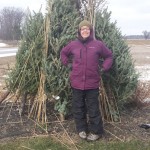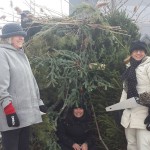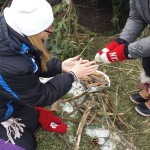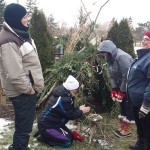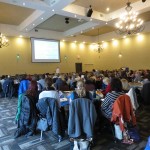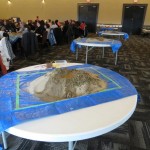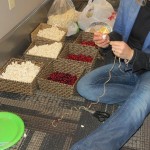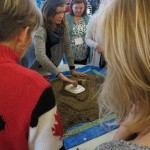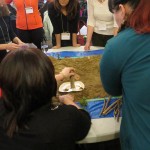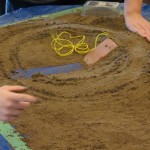Cultivating Natural Playgrounds Workshop Series Session Two: Designing a Natural Playground & Extending Curriculum Outdoors in Winter
Participants are encouraged to think of their space as an outdoor classroom that engages all five senses. Loose parts are a wonderful way to allow children to use all of their senses. In order to prepare for the availability these sensorial materials, educators will need to improve and organize their outdoor storage to be smaller and more accessible to allow for more loose parts. Adding natural loose parts such as leaves, pods, driftwood, rocks, fabric, sand and mud allow for rich sensory and dramatic play. Employ the children’s observation skills with magnifying glasses, measuring tape, and buckets.
Incorporate music into your outdoor playground by encouraging the children to explore natural sounds such as different thicknesses of wood and create their own music with found materials. Dedicate space to edible plants and flowers as a provocation to the children’s sense of smell and taste and also as a means to promote stewardship of nature.
Jill Bienenstock’s Suggestions for Essential Playground Elements
Natural Playgrounds involve topography change, pathways, fallen logs, boulders and large trees and shrubs. We also add in art and music. All these changes assist in providing an outdoor environment where children are engaged in nature as well as a place that provides opportunities in all areas of development (not just gross motor skills). Art and music provide opportunities that break down the barriers presented by age, language, and physical ability while encouraging collation and other positive social skills. Outdoor environments need to engage a child’s 5 senses; adding in art and music supports this. Examples of adding art to your playgrounds include; acrylic fence panels walls, chalk board panels, stick holders, wacky posts, activity tables. Examples of adding music to your playground include; music walls made by staff and children, chimes, whale drums, hanging amadindas (xylophones), bongo drums, chime fences.
Loose parts found in nature provide a wide variety of opportunities for children in areas of art, construction, and dramatic play. Loose parts are suggestive, open-ended, and free. Having a space on your playground to use big loose parts (large sticks and stumps) and a quiet area to explore smaller parts (acorns, pine cones, leaves, flowers, etc..) are needed. Baskets and storage units are very important to keep loose parts handy and close by to assist in programming.
Session Resources
12 Steps to Creating a Natural Playground
Pine Cone and Recycled Bird Feeders
Backyard Birds
Making Maple Syrup
Maple Syrup Activities
Ice Art and Ice Castles
What Participants Had to Say
“I am so excited to try these ideas EVERYDAY outside with my group”
“Start with building a fort on Monday, bird feeders next week, tap a tree in March”
“This was great, gets the ideas going again to help think outside the box.”
